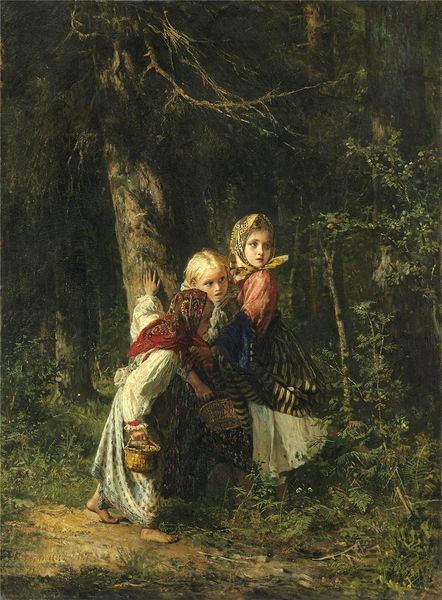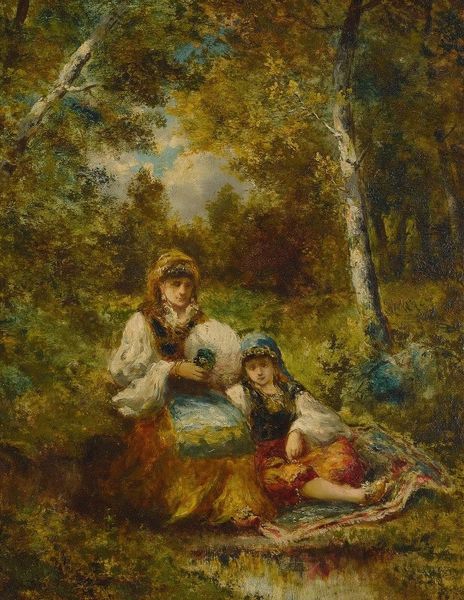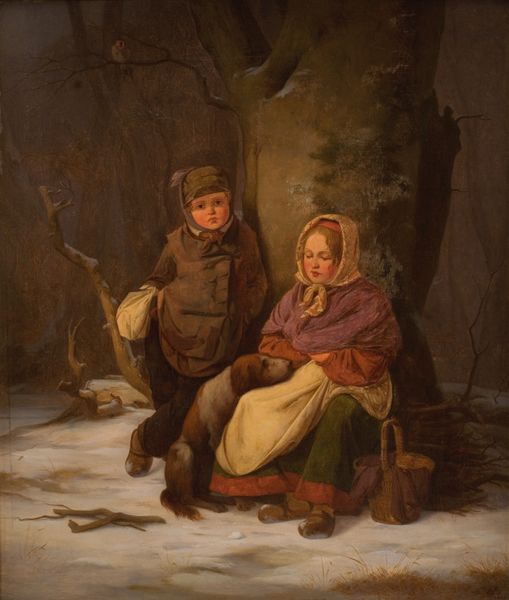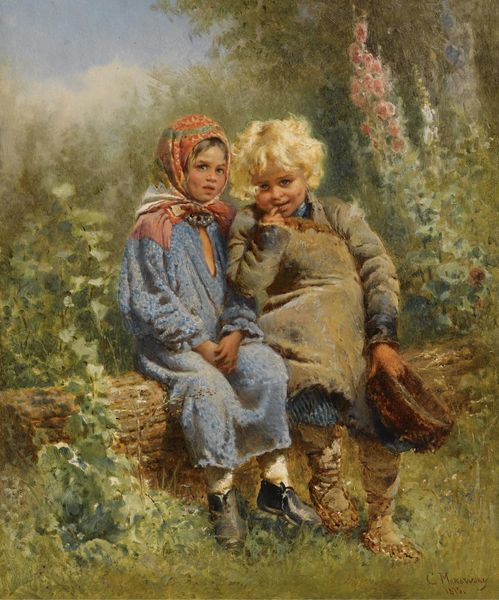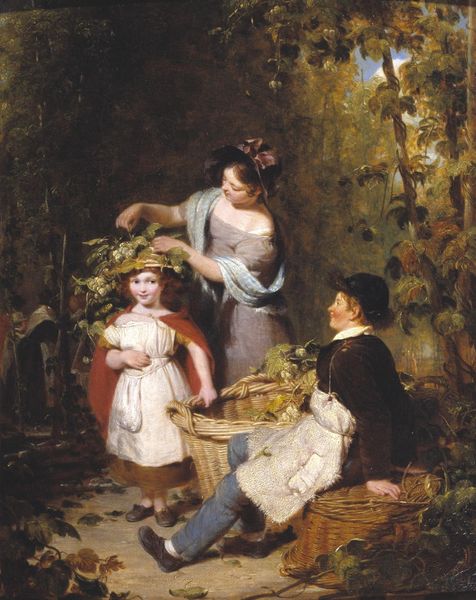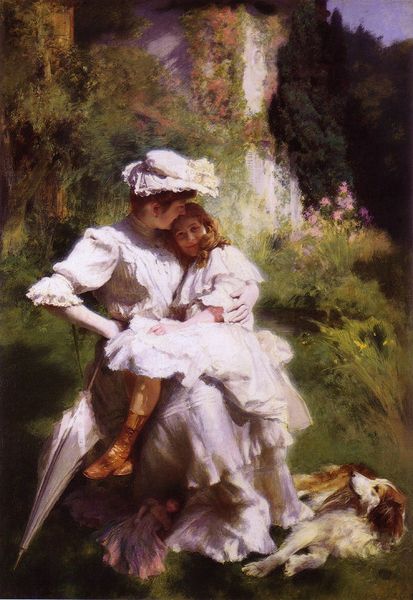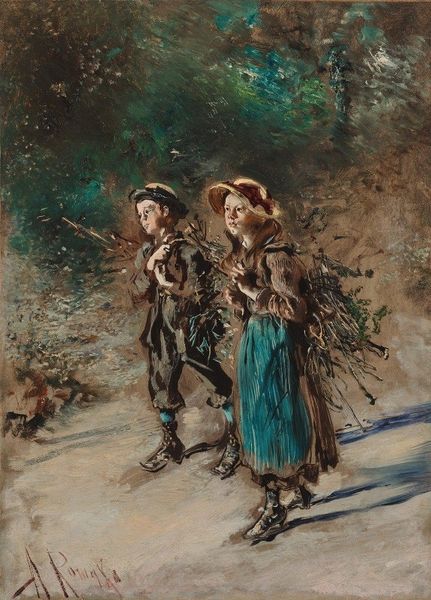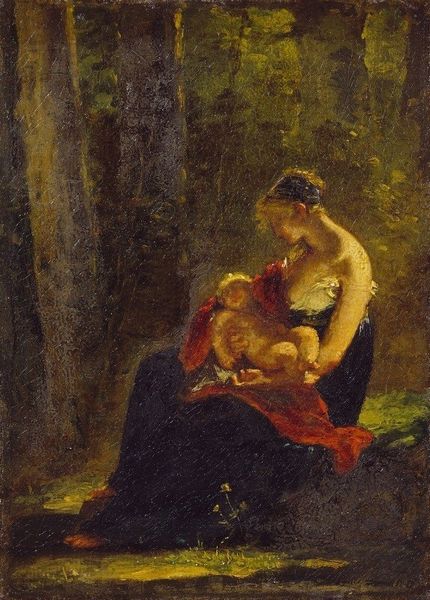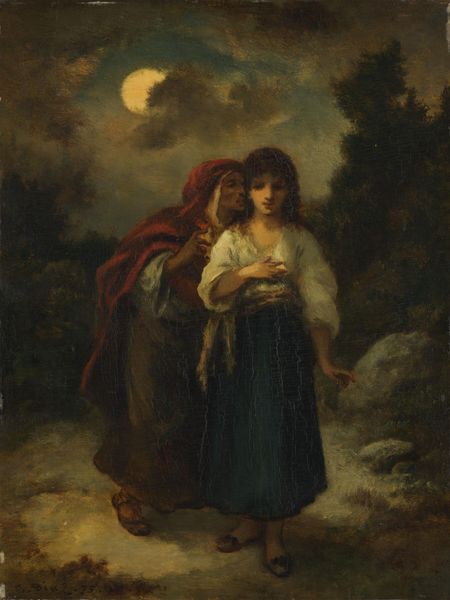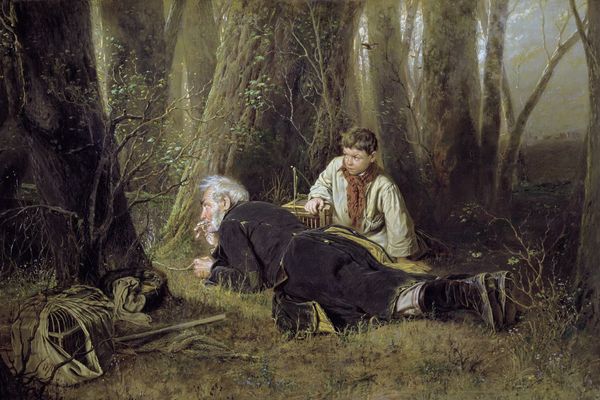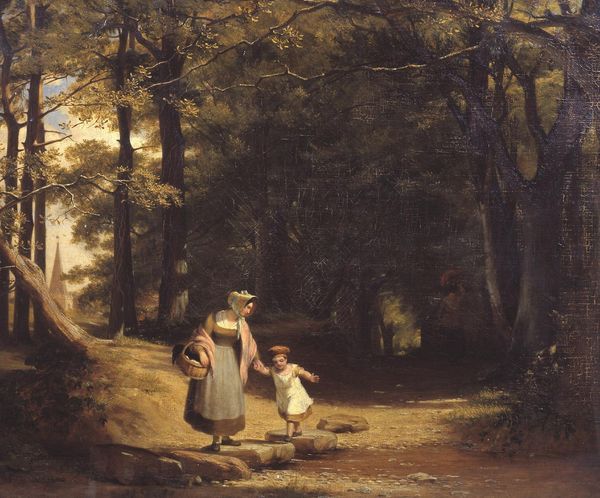
Copyright: Public domain
Editor: Here we have Alexei Korzukhin's "Peasant Girls in the Forest," painted in 1877 using oil paint. There's something really captivating about the texture in the way the light hits the tree. What can you tell me about the context and materials used here? Curator: Looking at this, I see a compelling tension between romanticized rural life and the harsh realities of peasant labor in 19th century Russia. Korzukhin’s choice of oil, applied with a visible brushstroke, isn't just about aesthetics. Consider how paint itself becomes a material signifier here, a valued commodity used to depict the impoverished. Editor: That’s interesting, I never thought about it that way. I guess I was focused on the subject. How does this play into social contexts of the time? Curator: Well, we need to think about who could afford such paintings, who it depicted and who benefitted from portraying the life of peasant workers as something quaint? Notice the bare feet, the worn fabric of their clothes, contrasting with the careful application of expensive pigments. Editor: So, you're saying the very act of creating this idyllic scene, using such materials, reinforces a class divide? Curator: Precisely. It elevates a specific type of labor as its subject using art as its material support, potentially obscuring the more difficult aspects of labor relations. Editor: That’s a very critical reading. It makes me think differently about what I'm actually seeing here. Curator: Yes. Reflect on the work itself but think about its broader impact. Whose stories are being told, and what materials are being utilized in that act of story-telling. Editor: I’ll definitely be paying more attention to the materials and labour in the work from now on. Thanks.
Comments
No comments
Be the first to comment and join the conversation on the ultimate creative platform.
